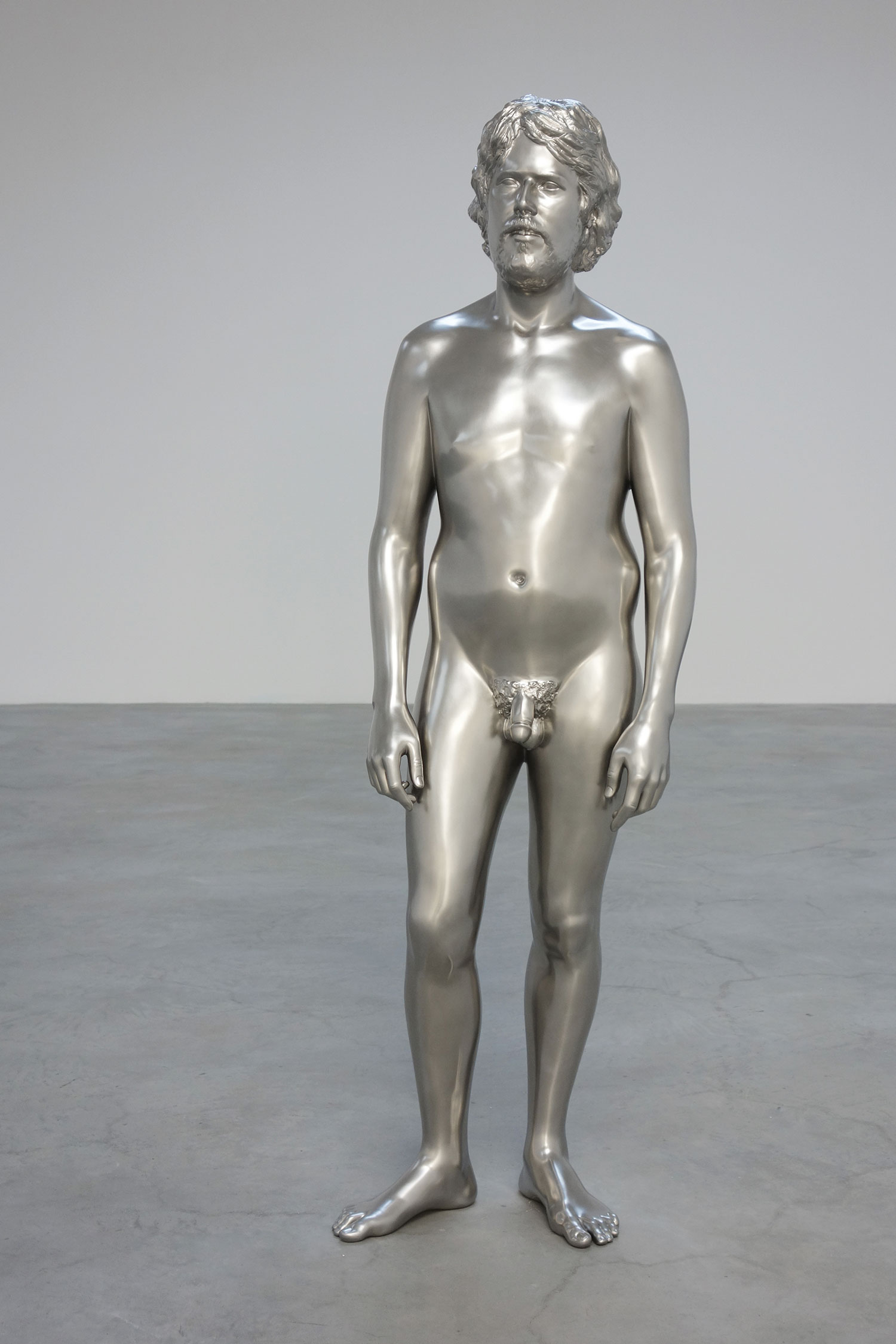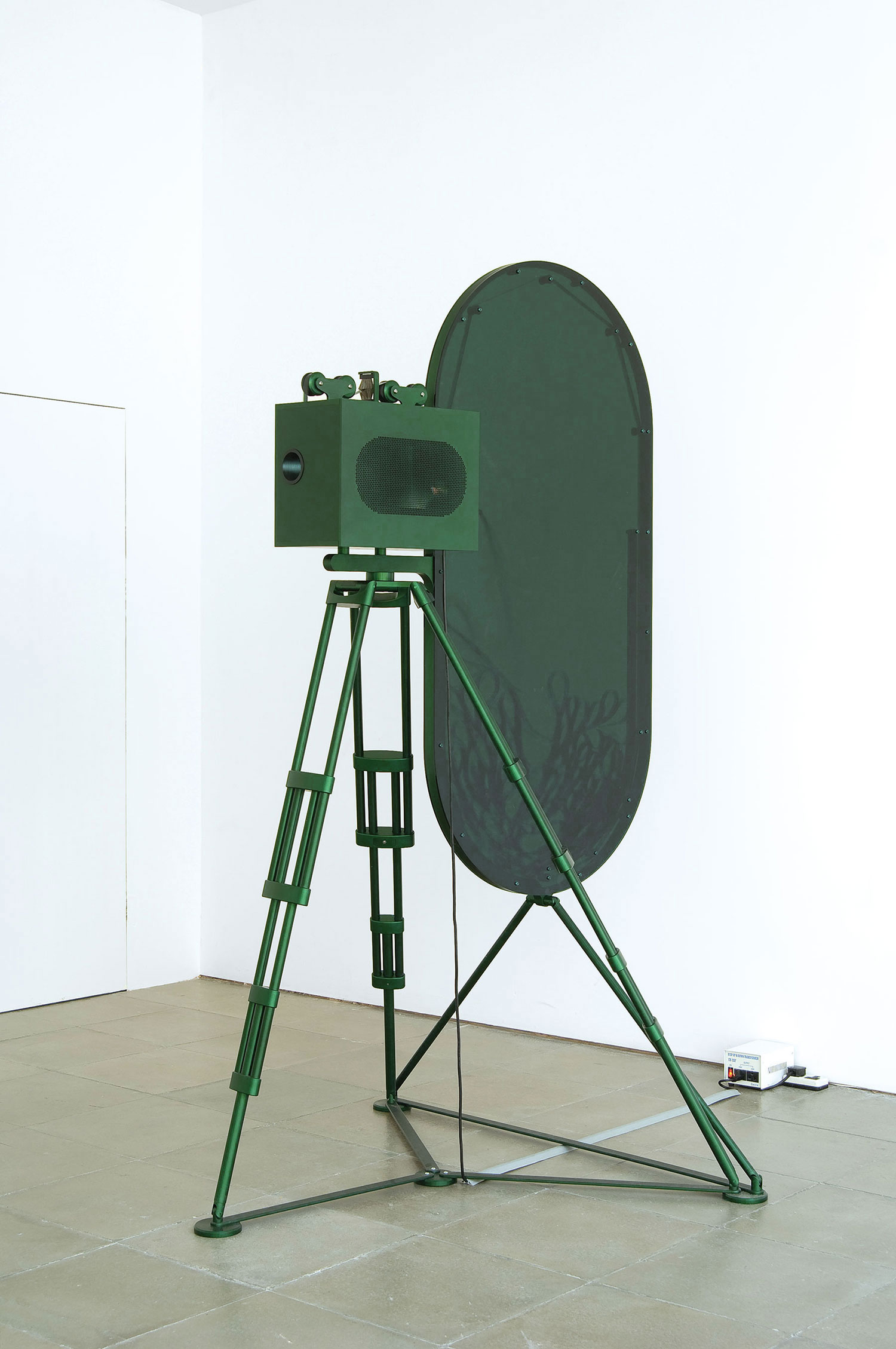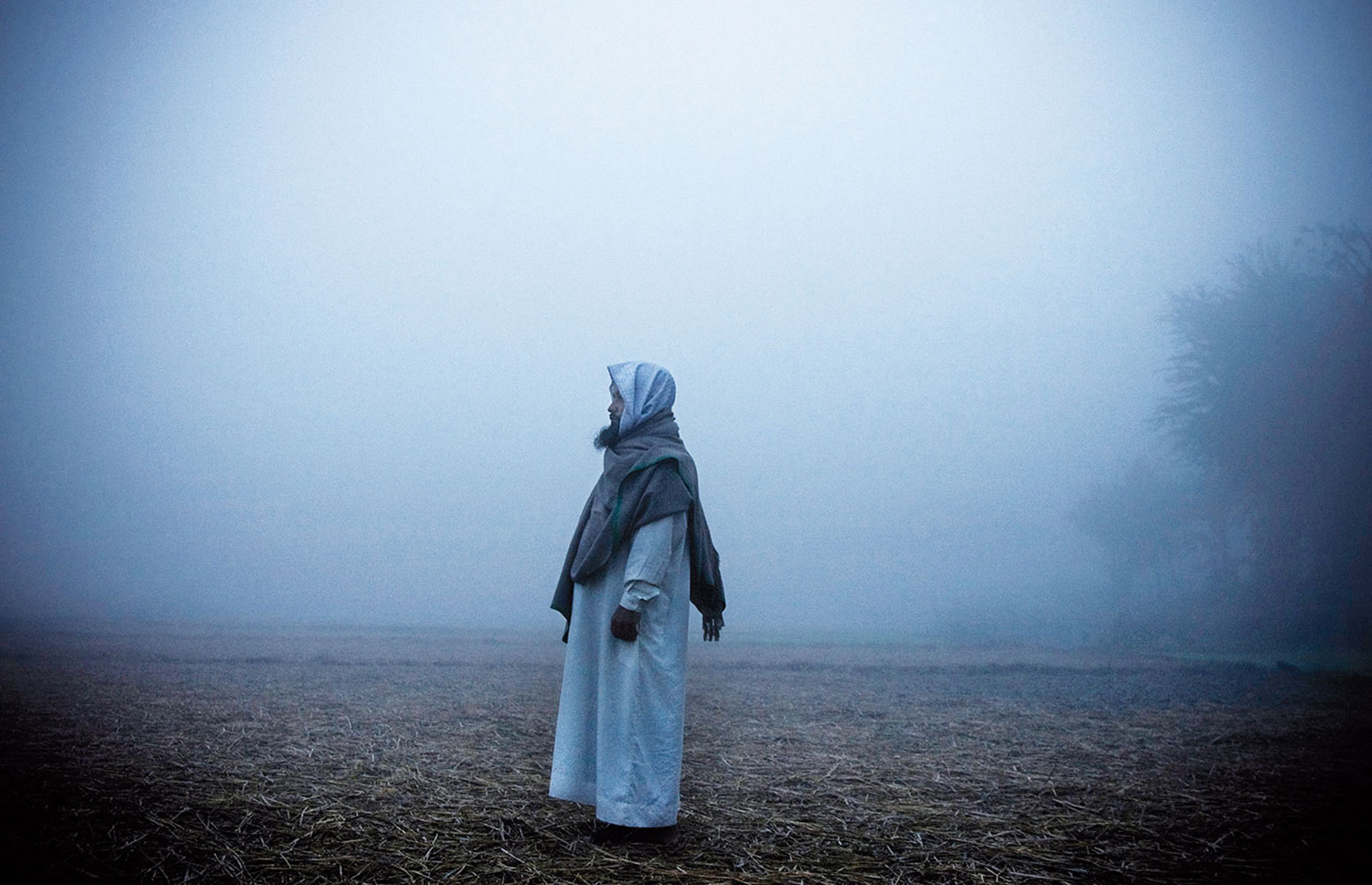
Hans Ulrich Obrist: I would like to ask about your epiphany, how it all started, how art came to you.
Seung-Taek Lee: I have had a very diverse range of interest since my childhood, one of the subjects being history. As I delved into history and art, I came to see the idea of leaving an important mark on history. When I began working with the wind series in the ’70s, and as it received good reviews, my ambitions became bigger and my confidence in my work grew stronger. This is when I started to ponder the origin of civilization, and I found the answer from within — during the ’70s Korean society was in some turmoil with many changes from Western influences. I realized that the answers could be sought from my work by connecting different worlds in search of another realm.
HUO: How did the wind series start?
S-TL: I thought an artist should have an intellectual capacity before anything. Although I never had the chance to study philosophy in depth, as I delved into my intellectual quest, my interest moved onto the unseen, the non-existent and the immaterial, something that is invisible rather than visible. In the late ’50s, I encountered a small photo of a Giacometti sculpture depicting an emaciated female body without any flesh or muscle and just left with bare bones, but still obviously female. Then I began to wonder: if I negate even the bones what will it become? So I came to the idea of negating the remainder and moving on to formless works or works that defy a solid form. In other words, the immaterial became my focus. This was around 1957 and 1958. As I began to think about immateriality, I saw smoke coming out of a chimney in the news — it was about Saudi Arabia’s oil-burning furnace, and during that time the image of “burning oil” was a symbol of wealth in Korea. It was that point when I realized that the only thing that can be expressed without formation is smoke, wind and fire.
HUO: Did you start with the wind?
S-TL: Yes, it started from smoke, and wind and fire came along.
HUO: Tell me about this piece Sound of Wind (1974).
S-TL: Instead of showing the shape of invisible wind, by installing a fish net I tried to capture the sound of wind. When there’s wind, the trembling fish net makes sound, and that’s how I tried to capture the sound of the wind.
HUO: Were you aware in the ’60s of the happenings in the West and Gutai in Japan?
S-TL: During ’50s there was no such thing as the Internet, so there were limited resources for finding out about what was happening outside the country. Especially because it was just after the Korean War. So I could say that my work was not in relation to the contemporaries of the West or Japan.

HUO: I would like to know more about the moss painting. Can you talk about the green landscape in Green Campaign Installation (1976)? It almost looks like a green river.
S-TL: On the floor you see the moss, and it is real on the rock, but the one right next to it is an artificial creation. I mixed fertilizer and moss with water and just poured it.
I didn’t paint it; I just poured it to make it look natural.
HUO: You did this gigantic project that didn’t produce any object. I suppose this work costs a lot of money to produce. So how do the economics work? I heard you have parallel activities and you make figurative work too.
S-TL: On the highway, they cut the mountains, and this is one part I didn’t make — I just found it. And this is all the moss after two weeks — it is natural. I also found it as well. As you are already aware, I make many sculptures in Korea, which includes historical figures such as Douglas MacArthur. The profit coming from making these sculptures gives me the freedom to do what I want.
HUO: So does it give you freedom? Is it like Duchamp?
S-TL: Yes, freedom. At the end of Duchamp’s life, he also made some objects and sold them.
HUO: I’m also interested in your scholarly works.
S-TL: I wrote a lot, maybe more than the average critic.
HUO: So have your writings ever been published?
S-TL: They have been published in magazines and I have kept them all.
HUO: Can you talk about other activities? Like making official sculptures? Are you documenting your figurative sculptures?
S-TL: My sculptures do not count as fine art since they are for money. For the sculptures to be counted as art, they need to have the qualities that have not been seen. But these sculptures can be done by anyone, thus I have excluded them from fine art.
HUO: But figurative sculpture is something you do everyday. Who are the people you have sculpted?
S-TL: I have done about sixty people including General MacArthur — he is the one who directed the Korean War so he is a kind of hero here — and also some economic figures like Mr. Lee Byung-Chul, the founder of the Samsung Corporation. So it all comes from different industries, from politics to the corporate world, and there is no boundary. And the important thing is that I don’t define this activity as art.

HUO: Can we talk about Buddha? At the 2010 Gwangju Biennial you showed a Buddha on fire.
S-TL: In order to strengthen the international competitiveness, we have to present something that’s ours, Korean or Asian, something with our authentic cultural background. And it’s nothing to do with religion. I really hate religion. I am not a Buddhist. I did one of these pieces and wrote a big message like a performance: “Those who sing off-tune are stupid; the religious and the political leftists are even more stupid; and lastly, people over 60 years old have no brain.”
HUO: Tell me about the earth pieces. Why is it titled Earth Play [or Earth Performance] (1989)?
S-TL: It’s about environmental issues, which started from the idea to take care of the earth and to love our planet more. It’s titled Earth Play because children love it. When the children go inside of it, they all go crazy.
HUO: What is “intervention and transmission”? Is it connected to the performance?
S-TL: When we make art, we experiment. Finish a work and this work will develop or unfold and other works will intervene or transmit. That’s what it means.
HUO: Are the water vessels in your piece Glass (1969) related to curing, like oriental medicine?
S-TL: It’s an injection. A nutritional shot to save the tree. Yes, you are correct. But I didn’t install it; I just took the photo. It’s actually a syringe for trees, for their recovery.
HUO: What about these trees? These are sky houses? Did you photograph it or make it?
S-TL: I got the idea from daily life. For example, the second picture, it looks like a bird’s nest. The first one is an African bird’s nest, so everything is related to the daily environment.
HUO: What are your local mountains? Do you live on a mountain?
S-TL: No. I travel to find the mountain.
HUO: Can you tell me about these signs on the mountain in your piece The Peak of Soul (1973)? These are interventions. Who saw those? Only your camera? Or were there any passersby?
S-TL: The signs are the cross and the swastika. I don’t like religion. As for the interventions, visitors go to this spot on the mountain and pray. If they are Christian, they pray in front of it, and if they are Buddhist, they bow. How fun it is! I really hate those reactions. They are crazy.
HUO: What triggered this beautiful stone house?
S-TL: There was no specific reason why I did it. I just liked it. The name of the house is House of an Artist.
HUO: These tombstones are another habitat. Can you tell me about these graves?
S-TL: Once again, it can only be found in Korea.
HUO: Why can it only be found in Korea?
S-TL: In Asia we have similar styles, like in Japan and China, but it’s just similar, not identical. So I tried to catch the differences. This kind of material is something to protect from rain, and now this is how it turns out with the sunlight, so the natural shade comes from the sun.
HUO: Do you have different series for the sand bags? You did it with Buddha and with the buildings.
S-TL: No series, just occasional works. They are all photographs, and they look like something I created, but I just photographed them as I found them; I just observed.
HUO: What’s the role of drawing?
S-TL: It’s something narrative, something I do before I start something. I sketch works as a foundation. That’s how I define drawing.
HUO: Are you drawing every day?
S-TL: Yes, of course, tons of drawings every day.
HUO: Have you ever published your drawings?
S-TL: No, but I have collected them so far. But I never did a book of drawing. Not officially.
HUO: I’m very curious to know more about your drawings. So that’s a self-portrait — Mr. Wind!
S-TL: Oh! I have been drawing approximately fifty self-portraits, which I exhibited in 2010 at the Arko Art Center in Seoul. It’s about those people who are my close friends.
HUO: Who are these people? Can you tell me about this piece?
S-TL: This is myself, and this is my younger brother who lives in North Korea. This is like a border, and these are the people in North Korea.
HUO: Why can’t you see him?
S-TL: Because we are divided — he is in North Korea. During the war, I came to South Korea but my brother stayed there. This is a kind of imaginary portrait of my brother because I never saw him as an old man. And you can see these hands; they are trying to reach each other.
HUO: When was the last time you saw him?
S-TL: I saw him last during the war around 19 years old.
HUO: Can you write to him?
S-TL: No. Total separation.
HUO: Last question, what about this “non-sculpture”?
S-TL: Since the ’60s I didn’t like ordinary sculpture. So I tried to make non-sculpture made of different materials, having different forms and having different meanings.
HUO: What’s your advice to a young artist?
S-TL: I would like to advise young artists to learn social science and philosophy as much as possible, because I think art is a game of high intellect; the more you understand the better the work comes out. Skills to make something perfect don’t have meaning anymore.





